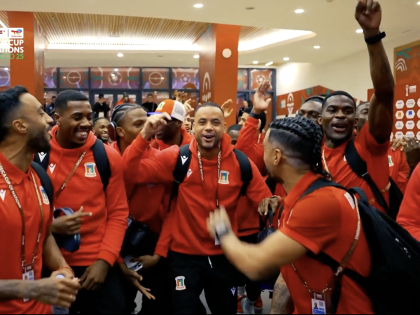South African Hip Hop–An Outsider’s Perspective
One evening while channel surfing at home, I stumbled upon what sounded like a rap cypher* on the radio. Quickly, I got up to look for an empty cassette tape nearby. Once I found one (a see-through Sonotech C-60 if memory serves right), hurriedly inserted it into the tape deck, and pressed the record button. That moment marked my introduction to the Sprite Rap Activity Jam on YFM, a show less acknowledged than, say, Le Club for contributing towards the growth of South African hip-hop.
Involved in that specific cypher were Skwatta Kamp and Asylum Trybe, two underground crews which had unsettled beef with one another. The former went on to obtain a major label recording deal, sell thousands of albums, win awards, and tour the African continent before imploding; the latter remained unsigned and wallowed in obscurity. Rap Activity was a platform for emcees in the Gauteng province to showcase their music. Everyone featured at some point – a young Proverb hungry for recognition; an upbeat Skwatta Kamp excited about their first official release Khut en joyn; a lyrically-vicious Pro (formerly Prokid) rapping with the aforementioned Asylum Trybe way before he released his breakout song ‘Soweto.’ Anchored by Paul Mnisi (alias Rudeboy Paul) and Oscar Mdlongwa (alias Oskido), it became–alongside Harambe, another seminal show on the radio station–a chapel for me.
I made mental notes of the regulars–Gorgeous Flash was an interesting one–and the once-off thrillers who’d leave everyone in awe. Up until that point, all I knew about South African hip-hop was limited to POC, Black Noise, and the area called ‘the Cape Flats.’ Cape Town was the mother city of rap, or so went the conventional wisdom whose disparaging echoes can be heard to this day. In retrospect, that narrative was the sanitized version of events. The South African hip-hop story was being packaged as television inserts whose reality felt at odds with not only the people who told them, but with the environment(s) from which the stories being told emanated. The hood served as a meaningless backdrop; no back-stories for the sake of context, and definitely no space to honour those who either came before or came from elsewhere in the country.
What the Rap Activity Jam did for me was offer a means to discover what exists beyond the music; to know that besides Skwatta being one of the biggest groups in South Africa, they are also a couple of homies from the East Rand and Alexandra who would change how hip-hop was perceived in the country. Through radio, and through websites such as Africasgateway and sahiphop.co.za, it was possible to connect to a scene which I was physically removed from. Because YFM was a regional radio station, the only way to access it was through the digital satellite service DSTV’s radio bouquet.
For me, it became a means to connect with what went on beyond Maseru’s close-knit circles, her preference for the familiar, and her absolute rejection of what mattered the most to me at that time–rap music. YFM was the definition of cool; people in my own hood would rave endlessly about it. The logic was that South African youth needed a voice to reflect them and the changing times. Impassively, we the outsiders embraced every detail of the marketing ploy. We were drunk with youth; fired up with passion; and high on life! To those who had a satellite dish, YFM was the it!
My introduction to the essence of South African hip-hop through this most unconventional of means spoke of the culture’s ability to transcend most barriers. I’d resort to recording shows on VHS tape when there weren’t any cassettes. Beyond the novelty of a youth-oriented radio station and a couple of niche websites (well, africasgateway was clocking huge figures at one point, to be fair), there was a desire to connect with and to understand hip-hop as a whole.
My view of South African hip-hop throughout this whole series of posts is therefore infused with these experiences of an outsider – these unknowns, on-going discoveries, and attempts to capture the culture’s evolution as honestly as possible. * The association is inspired by the circular shape on-lookers adopt as a rapper busts rhyme, oftentimes to the rhythm of a beatbox.
* Photo Credits: Image of Shaheen Ariefdien of Prophets of da City is screen grab from the video “Never Again” (top); Ready D image (Red Bull / Mail & Guardian).



















